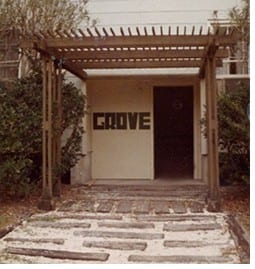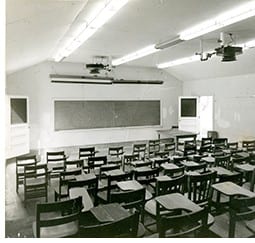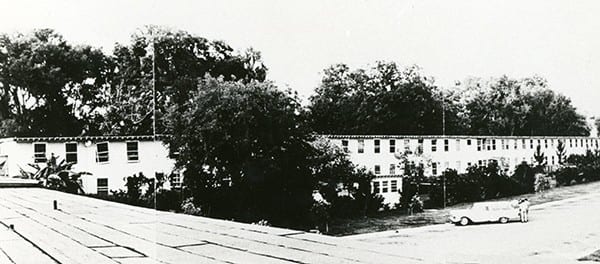
Prugh, professor emeritus of architecture, fondly remembers Grove Hall as the place where he and his fellow classmates spent much of their time. Despite its rough appearance, the temporary building was home to many students of the college.
“Students had individual offices in Grove Hall, which helped create a sense of student ownership,” he said.
Prugh remembers the drawings of graffiti that lined the inside walls of the wooden building and the hours he spent at his studio, pulling “all-nighters” while working on his projects for class.
Prugh described experiencing many power outages due to the lack of outlets the building possessed, and even remembers having to finish a drawing with candles attached to a parallel bar in his office.
“Students would wonder up and down the halls and paint caricatures of faculty on the walls,” he said.
Grove Hall was a two-story, wooden building that held single rooms stretching down 400-foot hallways, Prugh said. The temporary structure was one of many military buildings relocated from Camp Blanding in Starke in order to accommodate the university’s post-war student enrollment boom in the late 1940s.

Prugh explained how he believes the temporary building was placed on what once was an orange grove on campus. Grove Hall was used as a dormitory to house men and women on separate occasions until the early 1960s when the college used it as studios and classrooms.
“I remember taking Basic Design, which was taught in Grove Hall,” he said.
When Prugh was a student, he said DCP courses weren’t taught in a single area on campus like today. From Building E behind Tigert Hall to Building X near Flavet Field, the college was scattered across the campus.
“We didn’t really have a single home like the students do today,” he said. “So we were all over the place until the Architecture Building was built.”
However, Prugh said that Grove Hall was the closest thing DCP students had to call home.
By 1977, Grove Hall was razed in preparation for the construction of the new Architecture Building that stands today, but many still hold memories of the temporary structure that will last a lifetime.
“Grove Hall was a unique place,” he said. “It was the center of our campus experience for all of us.”
